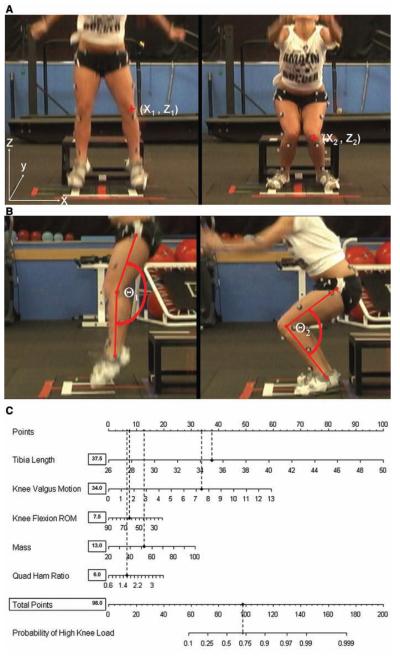Figure 9.
Example prediction of probability for high knee abduction moment (KAM) from a representative participant’s landing mechanics measured during the performance of a drop vertical jump. A, knee valgus motion during the drop vertical jump is calculated as the displacement measure between the 2 marked knee alignments in the X plane measured at the frame prior to initial contact and the frame with maximum knee flexion (X2 – X1). B, knee flexion range of motion during the drop vertical jump is calculated as the difference in knee flexion angle between initial contact and maximum knee flexion positions (ϴ1 – ϴ2). C, completed nomogram for the representative participant (tibia length, 35.0 cm; knee valgus motion, 7.4 cm; knee flexion range of motion, 65.8°; body mass, 52.2 kg; quadriceps-to-hamstrings ratio, 1.55%). Based on her demonstrated measurements, this athlete would have a 73% chance (98 points) to demonstrate high KAM during the drop vertical jump. Her actual KAM measure for the presented drop vertical jump that was quantified simultaneously with 3D motion analysis was 24.2 N ·m of knee abduction load.

